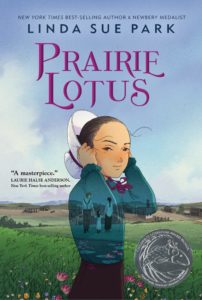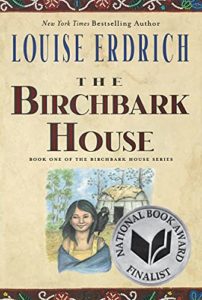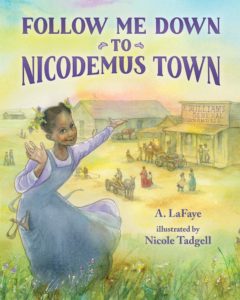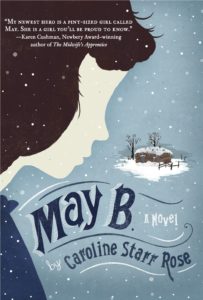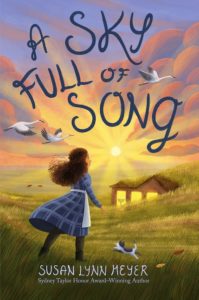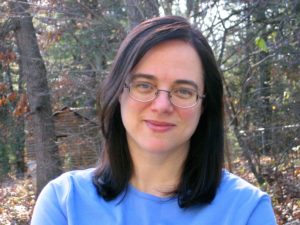“After the Little House Books”
Maybe you have a child or student who absolutely loved Laura Ingalls Wilder’s Little House books and who feels forlorn at reaching the end of the series. Or maybe you’re wary about introducing these books into your house or classroom, given recent critiques of the books’ representation of Native and Black people, attitudes particularly voiced by Ma.
What other books can you turn to?
Here are some other middle-grade novels about this period in history from a variety of different perspectives that you might want to have in your classroom or library to hand to a young reader.
PRAIRIE LOTUS by Linda Sue Park (Boston: Clarion Books, 2020).
Linda Sue Park grew up loving the Little House books but wishing that she could see herself in them, as she explains in her author’s note. The result was this novel, in which she imagines a way that a half-white, half-Chinese (or in fact, as Hanna later learns, one-fourth Chinese, one-fourth Korean) girl could have ended up in DeSmet, South Dakota. Park’s main character, fourteen-year-old Hanna, has come from California in 1880 with her father to the small town of LaForge, where he opens a dry good shop. Hanna dreams of getting her diploma and then becoming a dressmaker in her father’s shop—but she must struggle against her father’s resistance and the biases of the townspeople to achieve her dreams.
BIRCHBARK HOUSE by Louise Erdrich (NY: Hyperion, 1999).
An Ojibwa girl, seven-year-old Omakayas, lives contentedly with her family on Turtle Island in Lake Superior in the 1840s, learning in detail the everyday ways of her people. When a white fur trader, passing through, brings smallpox to their community, her people are devastated by the disease—and through the devastation, Omakayas finds herself in the role of healer and also learns the grievous story of her past. The narrative continues in later books in the series. Perfect for students who want another series of novels.
FOLLOW ME DOWN TO NICODEMUS TOWN by A. LaFaye, illustrated by Nicole Tadgell (Albert Whitman, 2019).
Not a middle-grade novel, but a longer picture book, this one tells the story of Dede, who sees a notice offering land to Black people in Kansas. She and her parents leave their life of sharecropping in the South and head to Nicodemus, Kansas, a town founded in the 1870s by formerly enslaved people, where they stake a claim and achieve a home of their own for the first time.
MAY B. by Caroline Starr Rose (NY: Random House, 2012).
This verse novel tells the dramatic and somber story of twelve-year old May B. in nineteen-century Kansas. May B. struggles in school and her parents, in need of money, arrange for her to live as a hired girl with the Oblingers, a young couple homesteading in an isolated dugout fifteen miles from May’s home. When the depressed young wife flees and Mr. Oblinger heads off to find her, May finds herself alone and struggling to survive for months until her father returns to bring her home for Christmas. This verse novel is perfect for struggling readers, as it is about a girl with reading challenges and because it tells its story in few words.
A dear friend of mine, a severely dyslexic poet / college professor, once told me that she turned to poetry as a young person because you got more meaning out of it per word—the struggle over each word had a bigger payoff. Poetry or verse novels may be perfect for a dyslexic reader you know
And my book:
A SKY FULL OF SONG by Susan Lynn Meyer (NY: Union Square Kids, 2023).
Eleven-year old Shoshana and her large family flee the persecution they face as Jews in the Russian Empire and come to North Dakota in 1906 where they struggle to farm the land while living in a dugout. Shoshana takes a fierce joy in the beauty of the prairie and in her family’s new animals, but her beloved older sister Libke misses their Ukrainian village and has a harder time learning English and making friends. Soon the sisters are at odds for the first time ever. Shoshana finds herself hiding her Jewish identity in the face of prejudice, while Libke insists on preserving it. Shoshana has to look deep within herself to realize that her family’s difference is their greatest strength. By listening to the music that has lived in her heart all along, Shoshana finds new meaning in the Jewish expression all beginnings are difficult, as well as in the resilience and traditions her people have brought all the way to the North Dakota prairie.
Praise:
“A different kind of prairie story has arisen, one that seeks in some manner to correct the past.”—The Wall Street Journal
“Meyer layers richly detailed depictions of Jewish traditions, stunning descriptions of the landscape, and a highly sympathetic narrator to convey an underreported historical arc.”—Publishers Weekly
“Frequent parallels to the Little House series accentuate how different Shoshana’s experience is from the White, Christian, mythically American lives of her classmates . . . . A moving, gently kind coming-to-America story.”—Kirkus Reviews
Possible read-alike exercises for students:
If your students read a Wilder novel paired with one of the read-alike books above, or if your students instead read two of the books above, it might be fun (as former teacher Stephanie Fitzgerald suggests on Goodreads—thank you!) to have them create Venn diagrams of the two books.
Draw two large, overlapping circles. In the overlapping space, list what the two books have in common. In the rest of each circle list elements that are different in the two books. Color in each circle or add drawings for an extra element of fun!
About the Author: Susan Lynn Meyer is the author of two previous middle-grade historical novels—Black Radishes, a Sydney Taylor Honor Award winner, and Skating with the Statue of Liberty—as well as three picture books. Her works have won the Jane Addams Peace Association Children’s Book Award and the New York State Charlotte Award, as well as many other honors. Her novels have been chosen as Junior Library Guild and PJ Our Way selections, included among Bank Street College of Education’s Best Children’s Books of the Year, and translated into German and Chinese. She is Professor of English and Creative Writing at Wellesley College and lives outside Boston.
Thank you, Susan, for this read-alike list!
